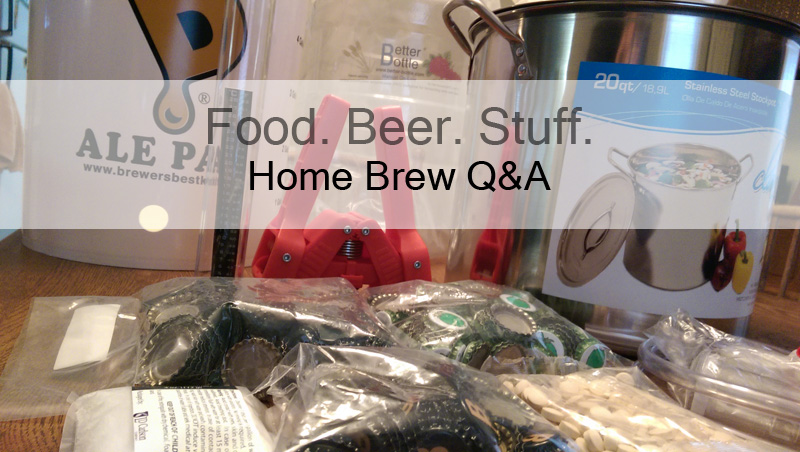
Can I just ferment in the bottling bucket? Why transfer from one to the other? Or if I want to do a secondary, could I just do that in the bottling bucket?
I have a Brown IPA fermenting in a bottling bucket right now. There’s nothing wrong with using the bottling bucket for the full fermentation but there are a few things to keep in mind.
A main reason people transfer from the primary to a bottling bucket is to leave the yeast and hops behind. Though most of it has settled during fermentation, without the transfer it is likely some of your beers will have a few “hop floaters”.
Personally, I haven’t found this to be a big deal when I use the bottling bucket to ferment but I also don’t think it’s a big deal when I find an errant hop in my beer so personal taste will vary.
Also, the transfer makes a good opportunity to mix in priming sugar. Many people add the priming sugar solution to the bottling bucket right before the transfer, so when the beer is added, it’s easy to mix in evenly. Adding priming solution to the whole batch without transferring will kick up sediment in the process, making the beer even more likely to contain floaters.
To remedy this, I will usually bottle prime when fermenting in the bottling bucket. After a nice cold crash, the sediment has sunken below the level of the spigot and I can just fill each bottle right from there.
The main worry when using the bottling bucket for a full fermentation though is sanitation. The spigot adds extra parts to worry about. The seal needs to be air tight and all the parts need to be cleaned, sanitized and replaced when worn.
To keep the spigot clean during the weeks it takes to ferment the beer, I will normally spray the inside of a plastic sandwich bag with sanitizer and tie it over the spigot. This keeps dust and other crap from getting to it. I also give it a good spray with sanitizer right before bottling as well.
As far as using the bottling bucket as a secondary vessel, I would be worried about doing that. I can’t say for a fact it won’t work but one would need to be really concerned about head space.
When you move your beer to a secondary vessel, you loose the protective layer of co2 that the fermentation created. If you give your beer too much head space in the secondary vessel you risk oxygenating your beer and spoiling its taste.
I really wouldn’t suggest giving it a try. Secondary fermentation is great for long term aging, fruit additions or other specialty adjuncts but it poses a significant risk to your batch. I would suggest using a vessel that minimizes head space like a carboy with airlock and bung and then, only using a secondary when necessary.
You got a question about home brewing? Dude, you could totally ask me! click here and just fill out the form and I’ll write back to you. Not just with random gibberish either (well, some gibberish) but with an actual answer. Each week (or whenever I get questions…) I’ll even feature one right here on Home Brew Q&A. Neato fucking mosquito, huh? -Daniel Kurt







